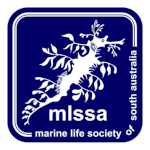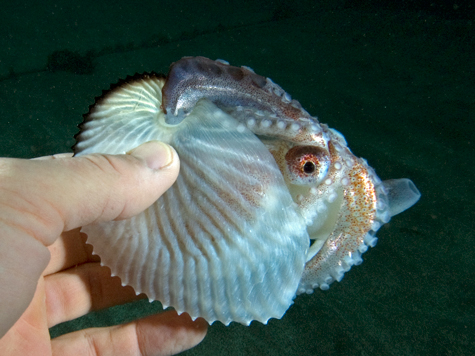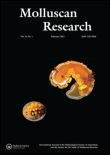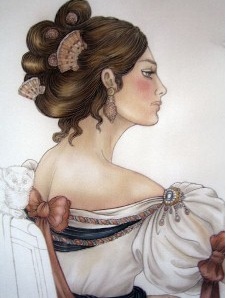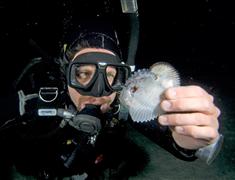A PhD student called Julian Finn contacted us in 2006 seeking some information about Jeanette Power. Julian said that Jeanette Power was famous for resolving the truth that argonauts build their own shells.
Julian is now Dr Julian Finn, Senior Curator of Marine Invertebrates for Museum Victoria. Back in 2006 he requested copies of some papers regarding Jeanette Power for a literature review that he was doing. It was intended for publication in the Journal of Molluscan Studies.
The papers that he requested from us were:
“The English translation of “Le poulpe de l’Argonauta argo” by Jeanette Power from the “Magazine of Natural History”
“The relation existing between the Argonaut-shell and its cephalopodus inhabitant” from the Zoological Society Bulletin” (1839)
We were able to mail the relevant papers to Julian and he ended up writing an argonaut monograph titled “Taxonomy and biology of the Argonauts (Cephalopoda: Argonautidae) with particular reference to Australian material”. It was published in Molluscan Research Volume 33, Issue 3, 2013.
The monograph includes comments such as “This variation is further confounded by the ability of female argonauts to repair (Power 1856)” and “Power, J. (1856) Observations physiques sur le Poulpe de l’Argonauta Argo (Physical observations on the octopus Argonauta argo). Imprimerie Ch de Morgues Freres, Paris.”
The papers that we had sent to Julian back in 2006 came from our library as part of the “Jeanette Power” file (mlssa No. 2239).
Jeannette Villepreux (1794-1871)
(Source: Jeannette Villepreux )
They had been sent to us by a Claude Arnal in 2003. Details were reported in our June 2003 Newsletter (No.300), under the title “Contacts Sought”. At the time, Claude was seeking “anybody interested in Argonauta argo”. He then gave us some background information about the early study of the species, as follows: –
“Jeanette Power was born Jeanne de Villepreux in France 1794. She later became married to a rich English merchant called James Power. In 1832 she made a close study of the Argonauta argo. As part of her work, she created and used the first known aquariums. Below is a document dated 1858, published in “Mollusca” by the famous Prof. Richard Owen about it.
“Introduction to MOLLUSCA (page 328) by Prof. Richard Owen (1858)
The knowledge of the varying forms of the living Mollusks, of their habits and powers, has been increased, and is likely to be materially advanced, by the rapidly extending practice of preserving them in confined spaces of sea or fresh water. Poli, Montagu, and before them probably other lovers of nature, resident near the sea, availed themselves of large vessels to keep alive, in frequently renewed sea-water, the marine animals in the study of which they were interested. But to Madame Jeanette Power (nee de Villepreux), according to the testimony of Professor Carmelo Maravigna, in the Journal du Cabinet Litteraire de l’Academia Gioenia, of Catania, for December 1834, ought to be attributed, if to any one individual, the invention and systematic application of the receptacles now called Aquaria, to the study of marine, and principally of molluscous animals.
Madam Power invented three kinds: one of glass, for preserving and studying living Mollusca in a room; another, also of glass, for small Mollusks, protected by an external cage of bars, in which they could be kept submerged in the sea, and withdrawn at will for inspection; and a third kind of cage for larger Mollusks, which could be sunk and anchored at a given depth in the sea, and raised, when required, for the purpose of observation and experiment. With these different kinds of molluscous menageries, of which the first answers to our present improved and enlarged aquaria, Madame Power carried on her observations and experiments from the year 1832 to 1842 at Messina in Sicily.
She determined the question of the true relation of the Argonauta, or Paper Nautilus, to the delicate boat-like shell which it inhabits. She first showed that the so-called “sails” were normally applied over the exterior of the shell, and proved experimentally that they were the organs which formed and repaired the shell. She proved that the Bulla lignaria preyed upon, and by its strong gizzard ground down and digested, the Dentalium entale. She described the curious manoeuvers by which the Astropecten aurantiacus seized and conveyed to its mouth and stomach small Naticae. And many other interesting facts were brought to light by this persevering and ingenious observer, through the application of the “Gabioline alla Power”, as her aquaria were termed by the Gioenia Academy, some years before the practice of so studying aquatic animals was introduced and diffused in this country.”
For years there was a great argument between Owen, the French naturalist Ducrotay de Blainville and others about the origin of the beautiful shell. Blainville wanted the Argonauta to be a squatter in the shell and Owen had the opposite opinion. Jeanette Power solved the problem years later when breaking shells. She proved that the cephalopod was able to repair it. In 1856 she published (in French) “Le poulpe de l’Argonauta argo”, and other marine studies in 1860. Forgotten for more than 120 years, she and her works are now coming back to light. I now have a lot of documentation about it. In the USA, following Owen’s testimony, she has become the mother of aquariophily and marine biology.
You will find details about her on many web sites by using the keywords “Villepreux-Power”. I found a study about the Argonauta on your website*, so I think that some of you could be interested by the cephalopod.
* (Our 1997 Journal started with an article about argonauts by Philip Hall.)
I am interested to find a contact with anybody interested in such history and particularly with the Argonauta argo. Can you please help me?
Claude Arnal, cl_@club-internet.fr “
As described in our June 2003 Newsletter, “Claude sent us a four-page bibliography of Jeanette Power (nee Jeanne Villepreux) with the above request. He later sent us two interesting documents (in English) from his archives. These were: –
- “The English translation of “Le poulpe de l’Argonauta argo” by Jeanette Power from the magazine of Natural History”
- “The relation existing between the Argonaut-shell and its cephalopodus inhabitant” from the “Zoological Society Bulletin” (1839)
The bibliography and two documents are now available from our Society’s library for loan to our members.”
So, to summarize, the above details from our June 2003 Newsletter had been found by (now Dr) Julian Finn in 2006 and he requested copies of the two documents that Claude Arnal had sent to us. Although Julian was preparing a literature review at the time, he hasn’t yet completed that. He did, however, write an argonaut monograph titled “Taxonomy and biology of the Argonauts (Cephalopoda: Argonautidae) with particular reference to Australian material”. It was published in Molluscan Research Volume 33, Issue 3, 2013.
Julian recently told us, “Should I ever publish a review that refers directly to Jeanette Power and draws on the photocopies you provided, I will do my best to acknowledge you and the MLSSA specifically.”
According to the Museum Victoria web page, “Dr Julian Finn has discovered that argonauts – also known as ‘paper nautiluses’ – have sophisticated control over their buoyancy in the water column. In doing so he has cleared up centuries of misunderstanding about the function of the female argonaut’s shell” and “Julian’s research was published in Proceedings of the Royal Society B today. The paper, ‘The argonaut shell: gas-mediated buoyancy control in a pelagic octopus’ was co-authored by Dr Mark Norman, Head of Sciences.”
Dr Julian Finn examining a female argonaut (Argonauta argo)
while SCUBA diving, Okidomari Harbour, Sea of Japan.
Image: Yasushi Okumura Source: Japan Underwater Films
Brittanica has details re “Jeanne Villepreux-Power” whilst many other web pages about her are written in French.
